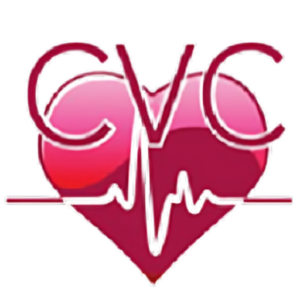Our Services >
In-Office Tests in The Villages, FL & Central Florida
Dr. Upadya
We push the limits of what's possible for our patients.
Welcome To Our Clinic
<span data-metadata=""><span data-buffer="">Cardiac and Vascular Consultants (CVC) is the premier cardiology and vascular practice in The Villages and Central Florida.
Lorem ipsum dolor sit amet, consectetur adipiscing elit. Vulputate eget velit eu volutpat. Risus, quisque tempor, morbi et lacinia. Elit dui sed enim dolor sit mattis quis. Ultrices dui ullamcorper vitae tincidunt integer at ultrices egestas. Lectus convallis vulputate odio aliquet porttitor. Mi convallis eu vitae dictumst. Libero quis cras nunc, in blandit amet ultrices. Neque vulputate metus nisi etiam odio.
We provide a full range of diagnostic and interventional cardiology and vascular services. Our expert physicians perform all cardiovascular services including heart and lower extremity catherizations, angioplasty, stents, pacemakers, defibrillators and ablations.
Explore Our Procedures
ANTICOAGULATION CHECKS
“INR” fingerstick for monitoring drug levels (“walk-in”s)
ECHOCARDIOGRAMS
Routine Study
An echocardiogram (echo) is a test that uses high frequency sound waves (ultrasound) to make pictures of your heart. The test is also called echocardiography or diagnostic cardiac ultrasound.
Quick facts
- An echo uses sound waves to create pictures of your heart’s chambers, valves, walls and the blood vessels (aorta, arteries, veins) attached to your heart.
- A probe called a transducer is passed over your chest. The probe produces sound waves that bounce off your heart and “echo” back to the probe. These waves are changed into pictures viewed on a video monitor.
- An echo can’t harm you.
Why do people need an echo test?
Your doctor may use an echo test to look at your heart’s structure and check how well your heart functions. The test helps your doctor find out:
- The size and shape of your heart, and the size, thickness and movement of your heart’s walls.
- How your heart moves.
- The heart’s pumping strength.
- If the heart valves are working correctly.
- If blood is leaking backwards through your heart valves (regurgitation).
- If the heart valves are too narrow (stenosis).
- If there is a tumor or infectious growth around your heart valves.
The test also will help your doctor find out if there are:
- Problems with the outer lining of your heart (the pericardium).
- Problems with the large blood vessels that enter and leave the heart.
- Blood clots in the chambers of your heart.
- Abnormal holes between the chambers of the heart.
https://www.heart.org/en/health-topics/heart-attack/diagnosing-a-heart-attack/echocardiogram-echo
EKG AND RELATED STUDIES
EKG
An electrocardiogram — abbreviated as EKG or ECG — is a test that measures the electrical activity of the heartbeat.
With each beat, an electrical impulse (or “wave”) travels through the heart.
This wave causes the muscle to squeeze and pump blood from the heart. A normal heartbeat on ECG will show the timing of the top and lower chambers.
Treadmill Stress Test
A stress test, sometimes called a treadmill test or exercise test, helps a doctor find out how well your heart handles work.
As your body works harder during the test, it requires more oxygen, so the heart must pump more blood.
The test can show if the blood supply is reduced in the arteries that supply the heart. It also helps doctors know the kind and level of exercise appropriate for a patient.
https://www.heart.org/en/health-topics/heart-attack/diagnosing-a-heart-attack/exercise-stress-test
Holter Monitor
A Holter monitor is a battery-operated portable device that measures and records your heart’s activity (ECG) continuously for 24 to 48 hours or longer depending on the type of monitoring used.
The device is the size of a small camera. It has wires with silver dollar-sized electrodes that attach to your skin. The Holter monitor and other devices that record your ECG as you go about your daily activities are called ambulatory electrocardiograms.
A Holter monitor test is usually performed after a traditional test to check your heart rhythm (electrocardiogram), especially if the electrocardiogram doesn’t give your doctor enough information about your heart’s condition.
https://www.heart.org/en/health-topics/heart-attack/diagnosing-a-heart-attack/holter-monitor
NUCLEAR STUDIES
Treadmill (Exercise) Stress Test
A nuclear stress test uses radioactive dye and an imaging machine to create pictures showing the blood flow to your heart. The test measures blood flow while you are at rest and are exerting yourself, showing areas with poor blood flow or damage in your heart.
The test usually involves injecting radioactive dye, then taking two sets of images of your heart — one while you’re at rest and another after exertion.
A nuclear stress test is one of several types of stress tests that may be performed alone or in combination. Compared with an exercise stress test, a nuclear stress test can help better determine your risk of a heart attack or other cardiac event if your doctor knows or suspects that you have coronary artery disease.
https://www.mayoclinic.org/tests-procedures/nuclear-stress-test/about/pac-20385231
Chemical Stress Test
A chemical or pharmacological stress test combines an intravenous medication) with an imaging technique (isotope imaging or echocardiography) to evaluate the LV. In these cases, the medication serves the purpose of increasing the heart load instead of using exercise. Stress causes normal coronary arteries to dilate, while the blood flow in a blocked coronary artery is reduced. This reduced blood flow may decrease the movement of the affected wall (as seen by echo), or have reduced isotope uptake in a nuclear scan. Agents that are commonly used in pharmacologic stress testing include dipyridamole, dobutamine and Adenosine (Trade name).
http://www.heartsite.com/html/chemical_stress.html
MUGA Scan
A MUGA scan is a test using a radioactive tracer (called a radionuclide) and a special camera to take pictures of your heart as it pumps blood. The test measures how well your heart pumps with every heartbeat. The test is called “multi-gated” because a gamma camera takes pictures at specific times during each heartbeat.
VASCULAR ULTRASOUNDS
Duplex Ultrasound
A duplex ultrasound is a test to see how blood moves through your arteries and veins.
How the Test is Performed
A duplex ultrasound combines:
- Traditional ultrasound: This uses sound waves that bounce off blood vessels to create pictures.
- Doppler ultrasound: This records sound waves reflecting off moving objects, such as blood, to measure their speed and other aspects of how they flow.
There are different types of duplex ultrasound exams. Some include:
- Arterial and venous duplex ultrasound of the abdomen. This test examines blood vessels and blood flow in the abdominal and lower extremities.
- Carotid duplex ultrasound looks at the carotid artery in the neck.
- Duplex ultrasound of the extremities looks at the arms or legs.
- Renal duplex ultrasound examines the kidneys and their blood vessels.
You may need to wear a medical gown. You will lie down on a table, and the ultrasound technician will spread a gel over the area being tested. The gel helps the sound waves get into your tissues.
A wand, called a transducer, is moved over the area being tested. This wand sends out the sound waves. A computer measures how the sound waves reflect back, and changes the sound waves into pictures. The Doppler creates a “swishing” sound, which is the sound of your blood moving through the arteries and veins.
You need to stay still during the exam. You may be asked to lie in different body positions, or to take a deep breath and hold it.
Sometimes during a duplex ultrasound of the legs, the health care provider may calculate an ankle-brachial index (ABI). You will need to wear blood pressure cuffs on your arms and legs for this test.
The ABI number is obtained by dividing the blood pressure in the ankle by the blood pressure in the arm. A value of 0.9 or greater is normal.
IMPLANTABLE LOOP RECORDER
A cardiac event recorder is a battery-powered portable device that you control to tape-record your heart’s electrical activity (ECG) when you have symptoms. There are two types of event recorders: a loop memory monitor and a symptom event monitor.
Cardiac event recorders and other devices that record your ECG as you go about your daily activities are also called ambulatory electrocardiographic monitors.
Quick facts:
- A cardiac event recorder makes a record of your electrocardiogram (ECG or EKG) when you have fast or slow heartbeats, or feel dizzy or like you want to faint. It can also be used to see how you respond to medicines.
- Some cardiac event recorders store your ECG in memory in the monitor. Your ECG can be sent by telephone to a receiving center or to your doctor.
- There are no risks when using a cardiac event recorder.
CARDIAC CATHETERIZATION AND CORONARY ANGIOGRAPHY
A cardiac cath provides information on how well your heart works, identifies problems and allows for procedures to open blocked arteries. For example, during cardiac cath your doctor may:
- Take X-rays using contrast dye injected through the catheter to look for narrowed or blocked coronary arteries. This is called coronary angiography or coronary arteriography.
- Perform a percutaneous coronary intervention (PCI) such as coronary angioplasty with stenting to open up narrowed or blocked segments of a coronary artery.
- Check the pressure in the four chambers of your heart.
- Take samples of blood to measure the oxygen content in the four chambers of your heart.
- Evaluate the ability of the pumping chambers to contract.
- Look for defects in the valves or chambers of your heart.



